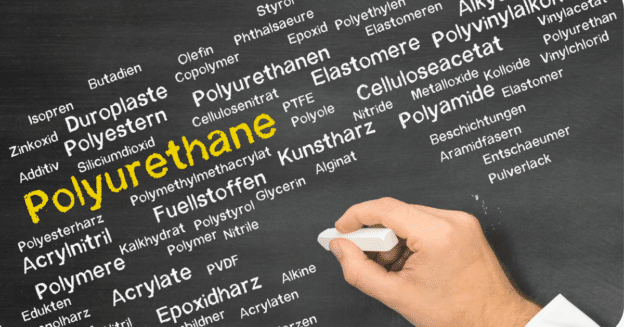If you are in the manufacturing industry, you have most likely heard the words “urethane” and “polyurethane” before. But the thing is, most people use these two terms interchangeably. If you experience confusion about urethane vs. polyurethane, this post will help clear up any misunderstanding.
Urethane vs. Polyurethane: Is There Any Difference?
Actually, there is no real difference between these two. The term “polyurethane” simply means that multiple urethane monomers make up this material.
Polyurethane is a simple polymer. It is a chemical compound that a scientific process known as polymerization forms. This combination of chemical compounds consists of repeating structural units. These structural units (or “groups”) are urethane.
The purpose of urethanes or polyurethanes is to produce parts that are used in countless industrial and commercial products and processes. To be more specific, the usage of polyurethanes occurs in the creation of extremely durable and long-lasting products. These products can adapt to a wide variety of situations. For example, acute cold or heat, chemical exposure, and impingement.
Polyurethanes can withstand pretty much any environment, making them the first choice for many manufacturers around the world. For nearly any industry in the world, the usage of polyurethane is quite common.
Many people have this misconception that urethane and polyurethane are different. However, there is no difference between the two products. Dedicated manufacturers and their marketing teams will educate their customers about the facts related to polyurethane. They will do this in order to help them make informed choices.
It’s true that the overall chemical structure of urethane and polyurethane can vary sometimes depending on how they are used (e.g. for varnish, elastomers, padding, or something else). But they are all called urethanes.
The term “polyurethane” only means that there are many urethane monomers linked together in a chain called a polymer (the end product). This is why it can be misleading to use this term. This is because it essentially means it is nothing more than a chemical group that has a bunch of urethane monomers within it.
The Final Verdict
The main difference – if you can call it that – between urethane and polyurethane is the number of urethane monomers linked together. Combining a number of urethanes monomers together in a polymerization reaction to produce one of the many products, such as cast urethane elastomers (as seen in our parts), forms polyurethane at a molecular level.
These multiple layers of urethane actually make polyurethane much more durable and flexible than urethane itself, which essentially has no use until its polymerization happens. If you’re looking to make solid, resilient, and long-lasting products, polyurethane can be an excellent material for you.
Its usage occurs in products such as solid elastomers for industrial use, padding for car seats, home furnishing and upholstery, and much more. Moreover, we can use polyurethane to make gaskets, seals, bushings, pads, rollers, bumpers, etc. And, it can also help create hard “plastics” which are more durable and resilient than synthetic rubber or regular plastic.
Still Have Questions? Feel Free to Ask Uniflex Inc.
At Uniflex Inc., we have been a leading supplier of custom molded urethane and polyurethane products in the country for over 40 years. If you want to reduce your manufacturing costs or upgrade your materials to a more durable option, we’ll be happy to talk! Call us at 248-486-6000 or complete this contact form. Our knowledgeable team will address your requirements in the best way possible.


